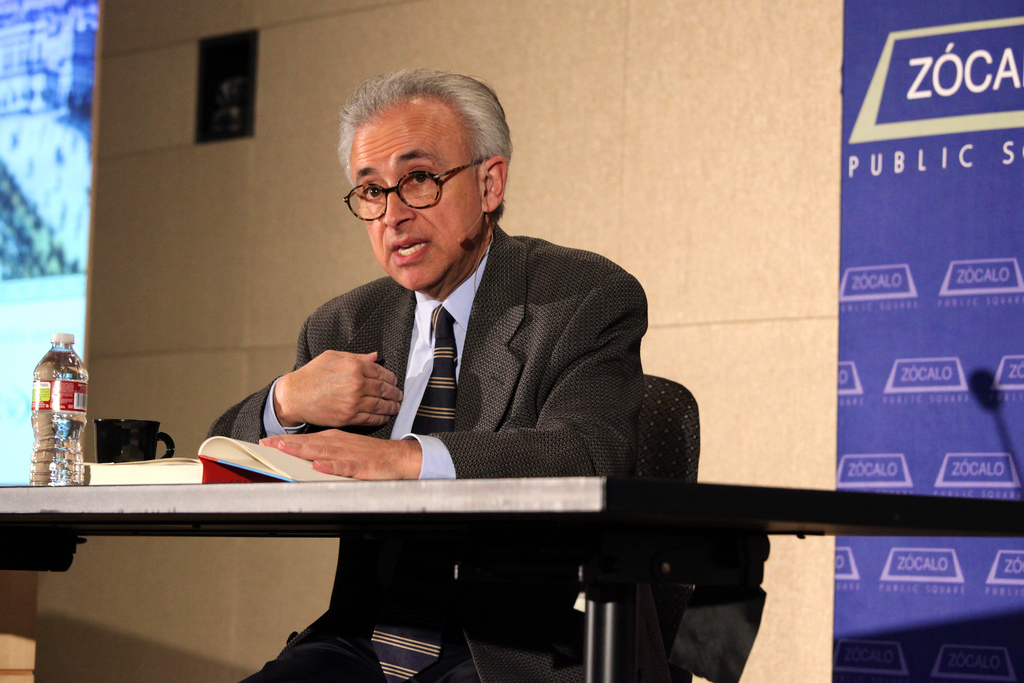
For Antonio Damasio, author of Self Comes to Mind: Constructing the Conscious Brain, the human mind is certainly an astounding thing, but it’s not as unique as many of us may think.
“One of the main points about this book is to dispel the myth that we are alone in the specialness of mind and consciousness,” Damasio said to the full house at the RAND Corporation. “I believe what we call mind and conscious mind are the current end product of a long period of evolution.”
Damasio went on to explain where the mind began, how it works, and what it allows humans to do – from thinking about the weekend to building civilizations.
Bacteria, fish, and us
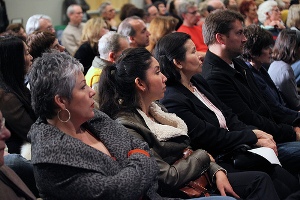 The story of the mind begins even before the story of the brain, with unicellular creatures. Today, animals, including simple ones like frogs and fish, are quite likely to have what Damasio called a “proto-self.” “I cannot prove it in the final quality of proof – which would be to get their testimony, but the fish can’t tell me, nor can the frog,” Damasio said. In any case, he added, “The burden is on us to disprove that they don’t rather than prove that they do.” The rate of brain evolution, Damasio noted in Q&A, is a mystery, though it’s clear the proto-self is millions of years old.
The story of the mind begins even before the story of the brain, with unicellular creatures. Today, animals, including simple ones like frogs and fish, are quite likely to have what Damasio called a “proto-self.” “I cannot prove it in the final quality of proof – which would be to get their testimony, but the fish can’t tell me, nor can the frog,” Damasio said. In any case, he added, “The burden is on us to disprove that they don’t rather than prove that they do.” The rate of brain evolution, Damasio noted in Q&A, is a mystery, though it’s clear the proto-self is millions of years old.
Beyond the proto-self is what Damasio called the “core self”, which does require a complex interaction between an organism and the world around it. It’s still not anywhere near as complex as the third part of the self – the autobiographical self. “We have a sense of personhood that is very elaborate,” he said. “Everyone in this room knows who he or she is. Everybody in this room has a narrative of the past.” Damasio imagined asking all the audience members who they were, anticipating that most would offer where they were born, what they like and dislike, and “some kind of trajectory”.
“If one is a very literary person, it will become beautiful with great words,” he said. “If one is a politician it will come with all sorts of embroidery…. If you’re an actor, probably it will come with aspects of vanity, and the same thing if you’re a professor neuroscience.”
Autobiographical selves are of course unnecessary for survival, as Damasio noted in Q&A. Single-cell bacteria have “a complex social life” – fighting in groups, building alliances – without having minds. But the complexity of human survival required the mind.
Your dog is special but not as special as you
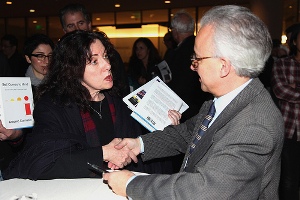 Damasio predicted another audience response: “You can say, ‘Are you sure that my dog doesn’t have an autobiographical self? My dog does. My dog knows who I am and a sense of what was before,’” he joked. “I will grant you that your dog is very special and has an autobiographical self.”
Damasio predicted another audience response: “You can say, ‘Are you sure that my dog doesn’t have an autobiographical self? My dog does. My dog knows who I am and a sense of what was before,’” he joked. “I will grant you that your dog is very special and has an autobiographical self.”
But, Damasio said, dogs do not have a sense of the anticipated future. “You cannot say my dog is actually very preoccupied with a certain gift he wants for Christmas,” he explained. For all the humans worried about gifts and other future plans, he said, “That is something that is incredibly beautiful and distinguishes human beings. We live every moment, every second of our lives poised between the lived past and the anticipated future.”
Humans have a “particularly bizarre” ability to create memories of the future. “Every time you think what you’re going to do next weekend, you’re going to put that in your memory,” Damasio said. “So you have a memory of the future that you hope to live.”
This process is constantly moving in time, and not “an object like a bottle,” not rigid. “There are some of you that suddenly started thinking what they’re going to do this weekend, and you’ve already probably put something in your memory,” Damasio said. Even though other animals, like chimps, do plan, Damasio argued that this type of planning – the constant movement between past and future, the reaction to the present based on a remembered past and expected future – is uniquely human.
The fish next door
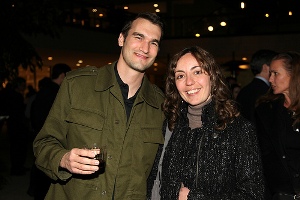 Because of its ability to recall past and anticipate future events, the human mind has unique emotional capacities, Damasio explained. “If we did not have an autobiographical self, we may have simple joys, but you may not have what we would call bliss,” he said. The same is true for pain, which can be amplified to suffering by the autobiographical self. That self, Damasio explained, also drove the development of memory, our reasoning capacity, language, and our relationships.
Because of its ability to recall past and anticipate future events, the human mind has unique emotional capacities, Damasio explained. “If we did not have an autobiographical self, we may have simple joys, but you may not have what we would call bliss,” he said. The same is true for pain, which can be amplified to suffering by the autobiographical self. That self, Damasio explained, also drove the development of memory, our reasoning capacity, language, and our relationships.
“If your sense of life is a constantly moving present, if you’re a fish, you’re probably not going to be terribly worried if the fish next door – if there were doors in the sea – is suffering, if he is being caught,” Damasio said. “But it will have a different impact if you are a person and you see suffering.”
Those relationships in turn spurred the development of civilizations and cultures, the aim of which are generally to maximize well-being. “The best of human states is a state in which we seek consistently well-being for ourselves and others, and a state in which we want to reduce pain and suffering,” Damasio said. He explained in Q&A that it’s certainly not the only state, as all humans have fundamental emotions like anger, happiness, sadness, disgust, and surprise, which are sometimes unruly and in conflict with social emotions like compassion, shame, pride, and admiration. “We did not come to being as nice people living in Santa Monica. We came to being in small tribes that were fighting against each other that had an ideal size of between 15 and 30,” Damasio said.
But the mind did give rise, through civilization, to what Damasio called “a socio-cultural form of life regulation.” Instruments of culture – morality, religion, arts, science, technology, economics, governments, “all of these things you think of as tumbling from somewhere without a cause are in fact the results of extremely direct inventions of human beings in order to make their life better,” Damasio said. As he added in Q&A, returning to Spinoza, the subject of a prior book, “Spinoza always said that the reason why you should be altruistic is that you want to favor yourself…that is a very beautiful idea.”
Like a symphony, and not
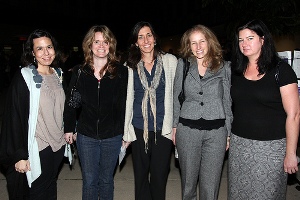 Despite having the highest form of self, Damasio said, the human mind isn’t entirely dependent on the most evolved part of the brain, the cerebral cortex. Rather, it’s in one of the oldest parts of our brain, the one whose design we share with reptiles – the brain stem. The brain stem connects “primordial feelings” with the more refined parts of the cerebral cortex. “It’s the dialogue between the very old part of the brain that we share with many other species and a new part of the brain that allows us to have all these very refined operations of mind, that allows us to become Mozarts or Shakespeares,” Damasio said. The mind also can’t be explained by particular neurons or neuro-modulators, like serotonin or dopamine, he said during Q&A. Those molecules are ancient, found in flies and fish, distributed throughout the brain and work in conjunction with other parts of the brain to generate a mind process.
Despite having the highest form of self, Damasio said, the human mind isn’t entirely dependent on the most evolved part of the brain, the cerebral cortex. Rather, it’s in one of the oldest parts of our brain, the one whose design we share with reptiles – the brain stem. The brain stem connects “primordial feelings” with the more refined parts of the cerebral cortex. “It’s the dialogue between the very old part of the brain that we share with many other species and a new part of the brain that allows us to have all these very refined operations of mind, that allows us to become Mozarts or Shakespeares,” Damasio said. The mind also can’t be explained by particular neurons or neuro-modulators, like serotonin or dopamine, he said during Q&A. Those molecules are ancient, found in flies and fish, distributed throughout the brain and work in conjunction with other parts of the brain to generate a mind process.
Damasio closed by quoting the first epigraph of his book, from the poet Fernando Pessoa: “My soul is like a hidden orchestra; I do not know which instruments grind and play away inside of me, strings and harps, timbales and drums. I can only recognize myself as a symphony.” Pessoa, Damasio noted, invented several pseudonyms, each with distinct selves, under which to write, and so well understood that the self is a combination of many elements, even if the symphony analogy is imperfect.
“You have a conductor looking at the musicians and you have musicians who have rehearsed a score,” Damasio said. “Our conscious minds are being made as they go. There is no score…. The conductor is himself an illusion that we create.”
Watch the video here.
See more photos here.
Read Antonio Damasio’s In The Green Room Q&A here.
Read an excerpt of Self Comes to Mind here.
Buy the book here.
*Photos by Aaron Salcido.




Send A Letter To the Editors